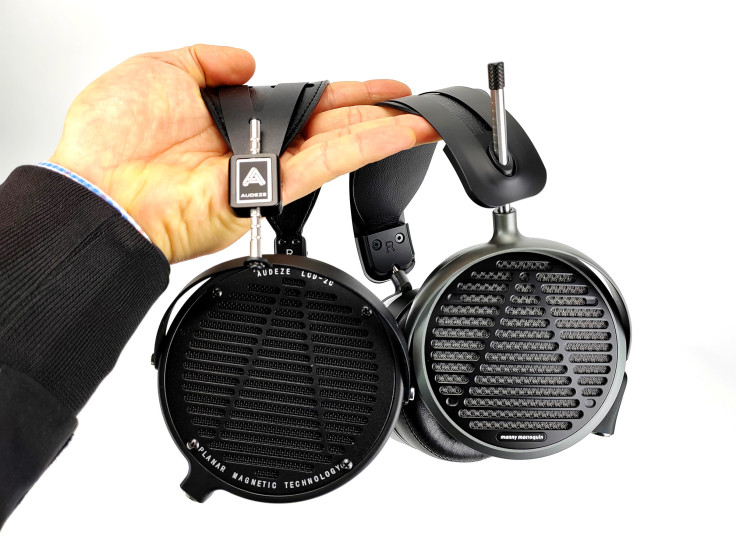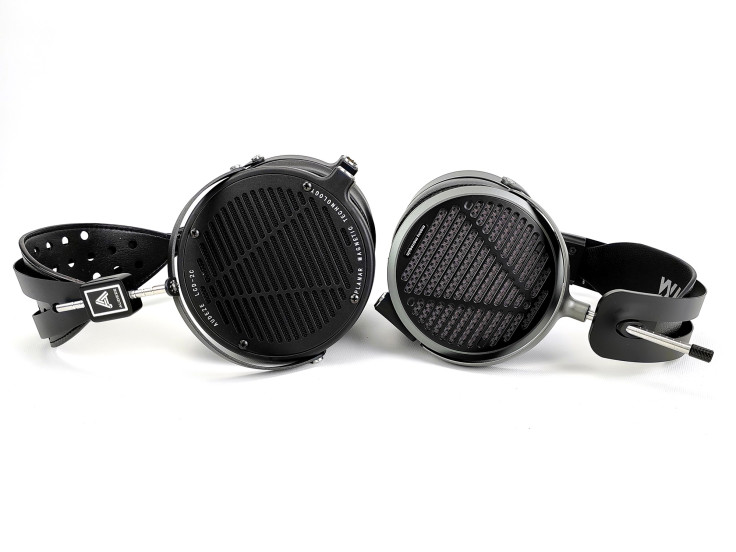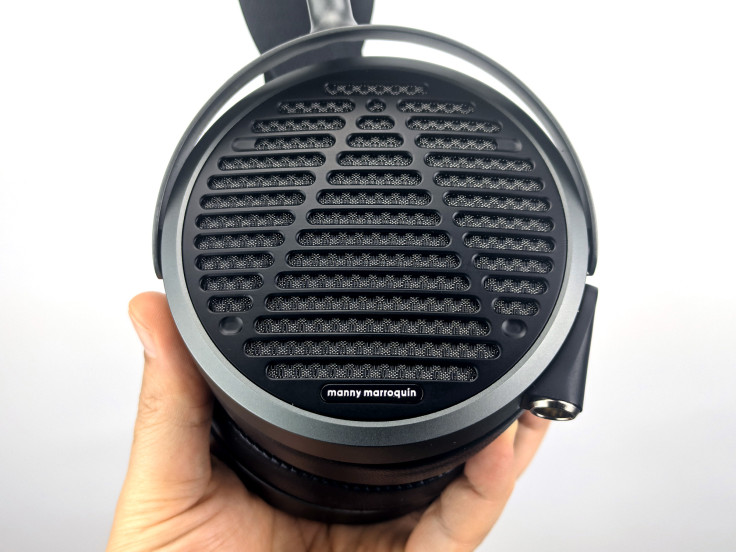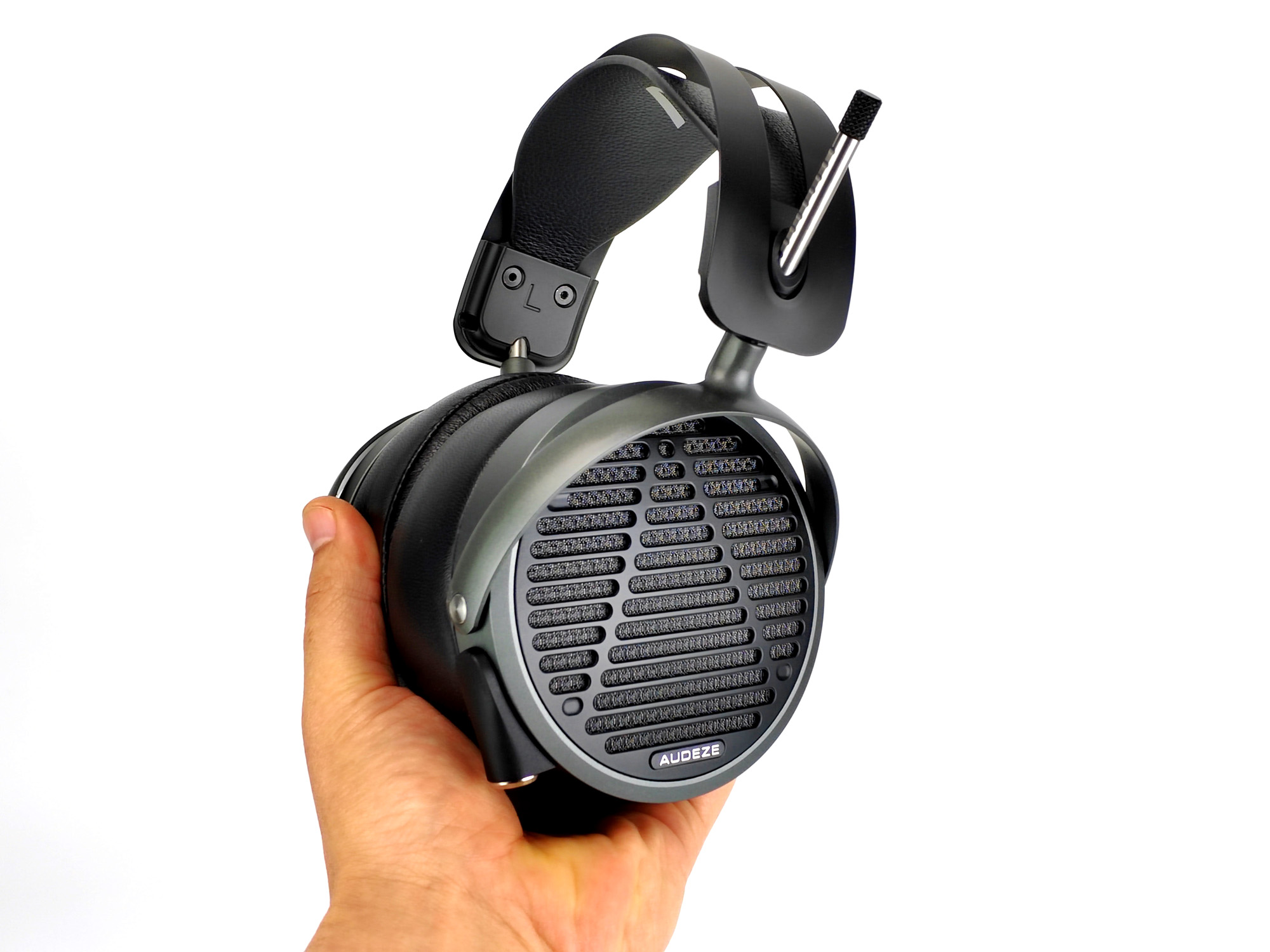Jeff Li/IBTimes US
There will always be an ongoing debate about what constitutes the audiophile sound: the pursuit of accurate presentation or an enjoyable one. The range of these two standards means that there will be people who prefer headphones that align with consumer preferences (following the Harman Curve) and those who prefer headphones tuned for sound engineers involved in mixing and mastering.
For those in the latter category, Audeze has introduced the MM line—a collaboration with renowned sound engineer Manny Marroquin, designed to cater to creators. As we get our hands on the MM-500, the question we’re exploring is: Can it also meet the demands of audiophile consumers? Let’s delve in to find out.

Jeff Li/IBTimes US
Goodbye Industrial Vibe, Hello Elegance
One of Audeze’s distinctive characteristics is its industrial aesthetic, with components that appear as if they’ve been meticulously machined in a workshop and assembled in a laboratory. The visual appeal of their more classic LCD series conveys a sense of excitement, akin to being part of an experiment with some prototype technology.

Jeff Li/IBTimes US
The MM-500, however, belongs to the new generation of Audeze headphones, boasting a more refined aesthetic. Gone are the bent-sheet metal yokes, spring washers, exposed philips screws, and machined grills. Instead, you’re greeted with custom cast and CNC machined components that resemble the precision of products emerging from the same assembly lines as Apple Macbooks.

Jeff Li/IBTimes US
One of the most remarkable updates can be seen in the steel rod tension adjustment system on the headbands, a distinct classic Audeze design. Unlike the classic rods found on the LCD-2C that we reviewed previously, which had the appearance of being hand-machined, the MM-500 rods are clearly crafted by a CNC machine, topped with a custom knurled screw for that finishing touch.
The headband, yoke, and faceplate design of the MM-500 closely resemble that of Audeze’s current flagship, the LCD-5. It’s hard to find fault with receiving hardware reminiscent of a $4,500 headphone for under $2,000.

Jeff Li/IBTimes US
Geared for Vocal Lovers
While powered by the same planar technology, Audeze’s various LCD headphones are tailored to different preferences. The LCD-X, for instance, is highly regarded by bass enthusiasts, whereas we discovered that the LCD-2C excelled particularly in vocal performance.
The MM-500, on the other hand, has redefined our expectations of vocal clarity. It effortlessly outperformed the LCD-2C in terms of presenting intricate vocal details. Just like its refined appearance, these headphones also offer a noticeably polished sound. When comparing the two headphones, the LCD-2C provides a relatively more atmospheric, airy, and spread-out sound, while the MM-500 brings all the sound to the forefront, akin to having studio speakers in a sound-isolated room.
It’s easy to understand why the forward-sounding nature of these headphones is the preferred choice for sound engineers. Every little detail becomes discernible, leaving no room for them to hide in the holographic plane. This isn’t to suggest that the MM-500 has poor sound staging; in fact, it offers an enjoyable layered spatial sound. However, it’s not one where all the sounds are seamlessly blended together. Instead, each layer can be distinguished individually, allowing an engineer to make precise adjustments or providing a listener who enjoys inspecting each tree, as well as the panoramic view of the entire forest.

Jeff Li/IBTimes US
Recommended Pairing
With its 18-ohm rating, the MM-500 is notably easier to drive compared to the 70-ohm LCD-2C. However, to truly unlock its full sound potential, we discovered that pairing the MM-500 with a proper desktop-grade amplifier is essential. For instance, while the FiiO K7 can drive the MM-500 to a comfortable listening volume, it’s only when we used the FiiO R7 or K9 that its sound truly began to shine.
We also observed that, like many other planar headphones we’ve tested, the MM-500’s sound significantly opens up when paired with a more analytical-sounding ESS DAC chipset, such as the dual ES9068AS chipset found in the FiiO K9. This is in contrast to the warmer AKM DAC chipset, like the AK4499 on the FiiO K9 Pro. The characteristics of the ESS DAC chipset better match the MM-500’s sound profile, enhancing the speed and precision of its planar sound, dynamic but never harsh.



















